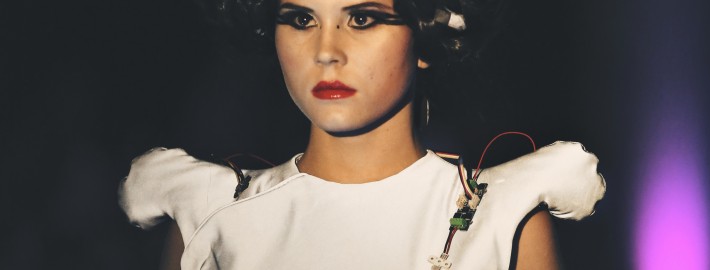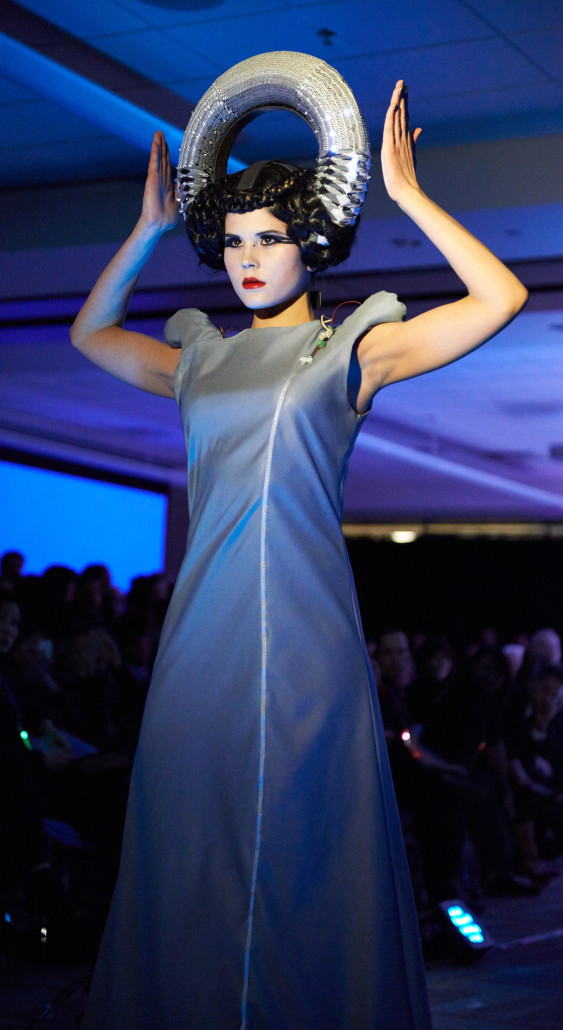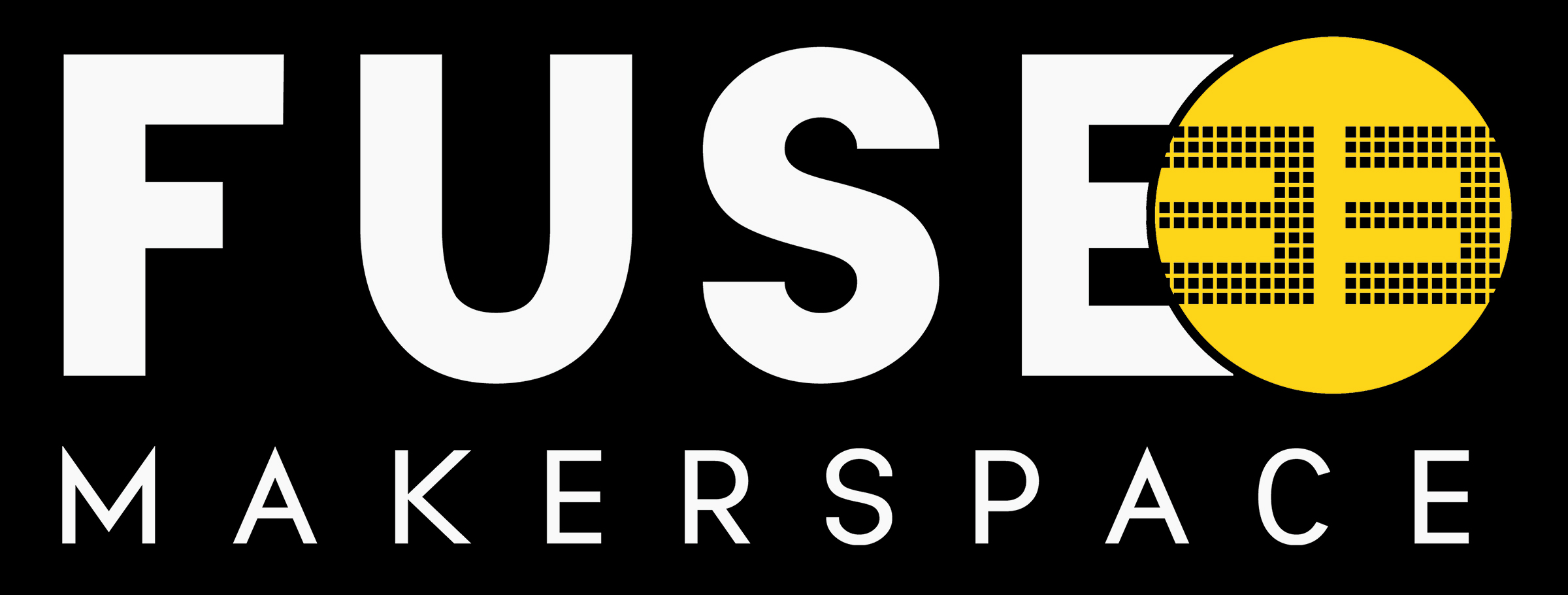MakeFashion Spotlight: Blinklifier
MakeFashion Spotlight is an insider’s look on our 2014 gala pieces. Follow us as we showcase each of our designers and the inspiration and technology behind their work. Photos by Justin Poulsen and Edward Ross photography.
Video by Paul Spenard
Patricia “Tricia” Flanagan is an Australian/ Irish. She grew up in a family run electrical company. For a school dance one year, 8 year old Tricia and her father rigged up a wiring harness with light globes which she could wear under her dress and hang over her shoulders. At the dance she lit the dress up by squeezing a garden hose-pipe filled with AAA batteries that was in her shoulder bag. The dress was a hit.
Tricia works between Australia, Europe, and Asia. She currently lives and works in Hong Kong where she founded the Wearables Lab at the Academy of Visual Arts, Hong Kong Baptist University in 2009.
“I worked as a fashion designer in the late 1980’s and costume designer in the 1990’s, then went to art school and focused on sculpture, installation and public art in the 2000’s. My work often incorporated electronics, for example to trigger sound. It was not until I set up the Wearables Lab at the Academy of Visual Arts in Hong Kong that the fashion skills and the electronics came together. By this time my interest was not in fashion per-say but looking at wearables as a platform between public and private space. My PhD research focused on public art and so my interest lies in the space between public and private. It is always a space in flux, and it is this dynamism that attracts me to develop work in this space, in the interface.
Blinklifier is a wearable computer that amplifies eyelid movements into a visible light array. It uses bio-data directly to interact with the computer to avoid conscious interaction and instead directly amplify the body’s expression.
The innovation in Blinklifier was to use the eye as a switch. That involved creating electroplated false eyelashes and connecting them to an Arduino micro-controller via conductive ink eyeliner (Bare Conductive) to create light configurations through a multiplexing matrix of LEDs. Fake eyelashes are plastic non-conducting surfaces that are activated through an electrochemical process. They are first etched and then coated with tin chloride and silver nitrate solution and then electroplated with copper to make them conductive. Lastly they are coated in black nickel so they change from silver to look a natural dark colour.
Blinklifier was designed for Hong Kong fashion week as one of a series of 5 pieces in response to the work of two Japanese painters Tomoaki Tarutani and VIWA, and a Hong Kong Fashion Designer Meiyi Cheung.
It was during this time that Katia Vega arrived from Peru to work in the lab, I had met her professor in Japan at the 2011 International Symposium on Wearable Computing and he recommended Katia come and work with me as a research assistant.
Blinklifier was the last of the five sculptures to be completed and a work in progress when she arrived, so we discussed how we could tech-it-up. Inspired by Celina Alvarado’s ‘Caught my Wink’ and Lucy and Bart’s ‘Hook and Eye’ my first drawings used hook and eyes and cotton to trigger a switch behind the ear. I had been discussing Bare conductive ink as a potential body battery in lectures in my Wearables courses at the university and this product offered a better solution than a mechanical switch and the product could be applied like eyeliner, so we quickly moved to trials of eyelashes cut from aluminum foil and painting false eyelashes with conductive paints and gels, but they were too ugly or the resistance was always to strong.
We needed a thinner but highly conductive medium and the solution came from a collaboration with EQA Lab in the development of the black false eyelashes used in the first prototype. Water is highly conductive; I was concerned about putting an electrical circuit near the eye. I needed an ethics approval if I was going to try this on anyone, but I was so excited about the research, so after a visit to an eye-specialist and a lot of research and questioning, I used myself as a lab-rat and the test was a success. We launched the prototype in Japan and the photo of me wearing it was published.
For the MakeFashion event I had to make a new version of ‘Blinklifier’ as the original was still in Australia after an exhibition in Queensland.
On this mission, big thanks go out to Seeed Studios in Shenzhen China who sponsored all the electronics in this piece. The head of their wearables product line Sonic Xie helped me source all the materials. Marcel Kohnz from Hochschule Trier University of Applied Sciences in Germany drew up schematics and created the harness in the Wearables Lab in Hong Kong.
Dave Hrynkiw from Solarbotics in Calgary helped tweak the coding and isolate bugs in the circuitry. I worked in the Solarbotics workshop to do the final installation of the technology into the wearable Blinklifier unit and I am grateful for their hospitality.
Many thanks also to Maria and Shannon Hoover for connecting me to the Calgary crew, and in Hong Kong Sarah Kirsch for many hours soldering, and Parry Ling and Levi Lam who helped bridge the language barrier in China and find last minute supplies as the deadline grew nearer.”
Along with Blinklifier Patricia Flanagan has created “Transit Textiles”, a mapping project where participants were given t-shirts that that recorded their activity moving around the city of Hong Kong over 21 days. Selvage Stories, another project, consists of a series of woven pockets that depicts maps of different cities and fills them with audio stories.
The 2014 MakeFashion gala brought to you by OnConference in March 2014 had over 400 attendees and showcased an inspiring collection of local and international wearable technology. E-mail info@makefashion.ca for information on how to become involved as a volunteer, designer, tech enthusiast, or sponsor.








Leave a Reply
Want to join the discussion?Feel free to contribute!